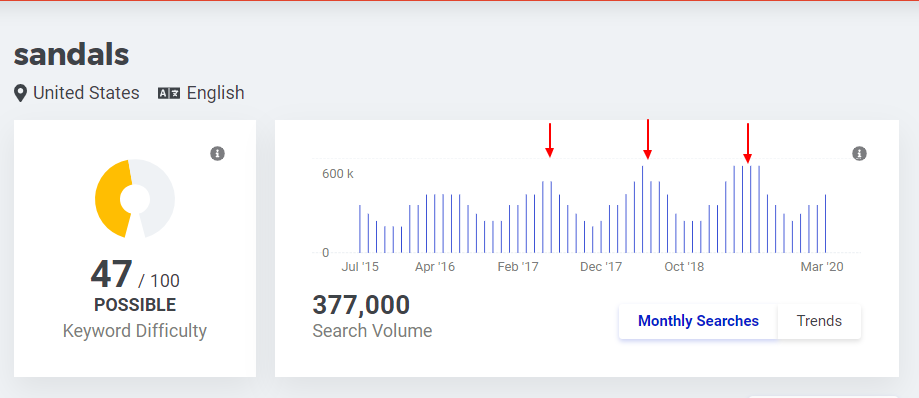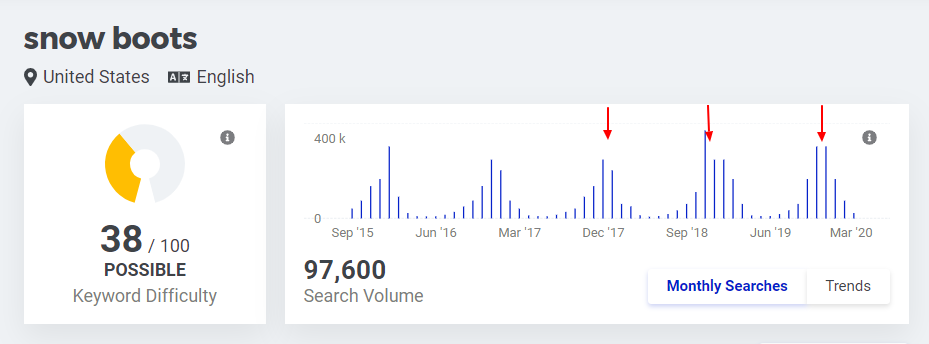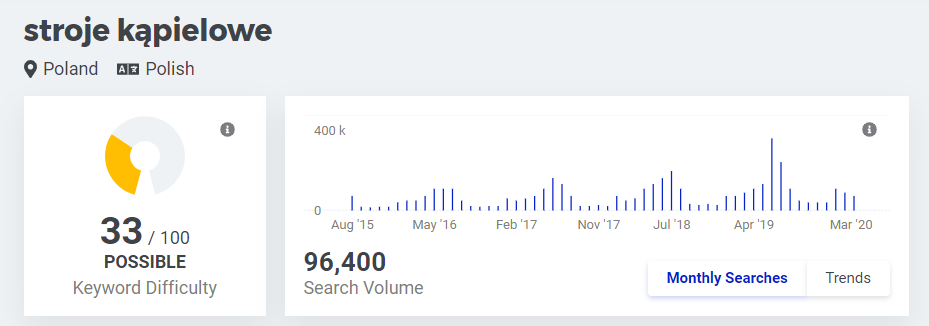Challenges to Overcome. Fashion Industry in Ecommerce in Search of Lost Traffic. Part 1
The fashion industry is demanding and depends on many factors. To help your clothing eCommerce rank higher and limit decreases, especially if you’re just starting out, you should know what elements affect it and how you can manage them. Therefore, in this article below I will show you what can cause changes in customer demand […]

The fashion industry is demanding and depends on many factors. To help your clothing eCommerce rank higher and limit decreases, especially if you’re just starting out, you should know what elements affect it and how you can manage them. Therefore, in this article below I will show you what can cause changes in customer demand and an unexpected drop in organic traffic in fashion eCommerce. In the second part, which will be released next week, I will explain how proper content optimization is a way to deal with declines. You will also find some valuable examples of measures you can take in eCommerce during a crisis.
Unexpectable Organic Traffic Drop in Fashion Industry
Experienced fashion retailers operating on the market for years have developed sales strategies that take into account the variability of seasons and consumer needs. Thanks to this, they are able to adjust their activities so that they generate satisfactory results. Smaller companies or eCommerce stores who have just recently started their online business, usually need time to gather reliable data on which they could base their forecasts. The first years of online activity are dedicated to learning how to function in the online reality. It is time for drawing valuable conclusions from the analysis of the quantity and quality of traffic, the sales path of users and their behavior within the website. Without historical eCommerce data, it is harder to predict consumer behavior in a changing situation and they can also experience the negative effects of such unexpected changes.
Seasonality of products
The cyclical variability of consumer needs throughout the year is a phenomenon that significantly influences sales in many industries. ECommerces that offer seasonal products must be aware of the fact that demand will be visible over a specific period of time, usually over 3 months. In other periods of the year, interest in a given group of products will be much lower which will also translate into lower traffic and sales. This refers to stores offering only clothing dedicated to winter sports or swimwear and beach accessories. In the case of eCommerce with a full range of clothing, this type of decline in demand for a given range is evened out with other products. So they may not feel the negative effects of seasonality, because properly prepared online strategy, both in terms of SEO and SEM, is able to fill gaps in traffic and sales.
Seasonality in the fashion industry varies depending on the location and length of the seasons, which determines the demand for a given group of products. Seasonality is most felt by eCommerce where the 4 seasons are characterized by a clear temperature amplitude, and therefore the clothing itself is very diverse.
In this case, online stores must be well prepared for a short period of seasonal peak, because otherwise, the competition will take advantage of this moment better and thereby capture the majority of traffic.
An example of the seasonality of products in the context of the popularity of phrases in organic results:


Weather anomalies
This element is somewhat related to seasonality, but it is characterized by unpredictability, which makes it difficult for fashion eCommerce stores to prepare in advance. The weather anomalies greatly affect the sales of seasonal collections, because it is enough that the winter is mild and snowless, and collections of down, thick jackets or insulated boots will not be popular among customers. A similar shift can be observed during a cold and rainy summer, when dresses, sandals or swimwear can sell worse than in the hot sunny season.
In the fashion industry, seasonal collections are prepared well in advance and the launch of their sales is scheduled for a specific time. Let’s assume, however, that the winter will be exceptionally long and cold, which means that changing the spring wardrobe will move in time, which will also delay the sales of spring collections and thus shorten their duration. This in turn will have a large impact on sales of seasonal clothes at regular prices and the need to lower prices to sell out stocks.
In the context of SEO, this means a decrease in organic traffic and conversions, and thus high positions for keyword phrases related to the spring range will not generate the expected number of visits.
Online stores offering a full range of all-season clothing must adapt to this type of weather variation and modify sales policy and online activities so that, despite adverse circumstances, seasonal collections remain attractive.
Let’s take for example the weather in Poland which is characterized by clear temperature differences depending on seasons. In 2019, the summer months were characterized by record-high temperatures and a large number of rainless days. This weather anomaly has a correlation in the popularity of the phrase “swimwear” because, as you can see in the screen below, the number of searches has also reached its peak over the last few years:

This weather anomaly was a definite surprise (in this case, definitely very favorable) for swimsuit manufacturers. However, if manufacturers rely on last year’s data, while this year’s summer in Poland turns out to be cool, interest in this type of assortment will decrease, which will result in fewer visits and thus lower sales.
Unpredicted situations and crises
What can completely change consumer behavior and affect the implementation of sales plans in eCommerce are various economic crises. It is difficult not to mention the current situation related to the global epidemiological threat of the Covid-19 virus, which almost instantly turned upside down many businesses and forced their owners to reformat their activities.
The fashion industry turned out to be one of those who felt the effects of this phenomenon and, consequently, the consequences of quarantine extremely severely. Changing the needs of consumers in times of danger and the related decline of interest in clothing and footwear, restrictions in many countries related to closing access to public space, encouraging people to work remotely and not leaving home are the main problems faced by shops offering an assortment of the fashion sector. The crisis we are currently facing has hit the fashion brands, forced to close their stores, resulting in huge financial losses that online sales may not be able to compensate for.
According to McKinsey’s predictions, in 2020 revenues of the entire fashion sector may decrease by 27 to 30%.
The above obstacles, which can be encountered by eCommerce stores from the fashion industry, largely determine the approach to online activities and SEO strategies.
Dealing with Lower Traffic in the Fashion Industry
Although the unexpected situations and obstacles described in the article are associated with inevitable losses in sales, my experience shows that there are ways to deal with declines. A properly prepared content strategy focused on SEO effects can play a big role in this process. It is also worth preparing eCommerce for specific circumstances to be ahead of the competition. In the next part of the article, I will describe how the content helps the fashion eCommerce deal with challenges and crises and give you examples of measures to support it.


